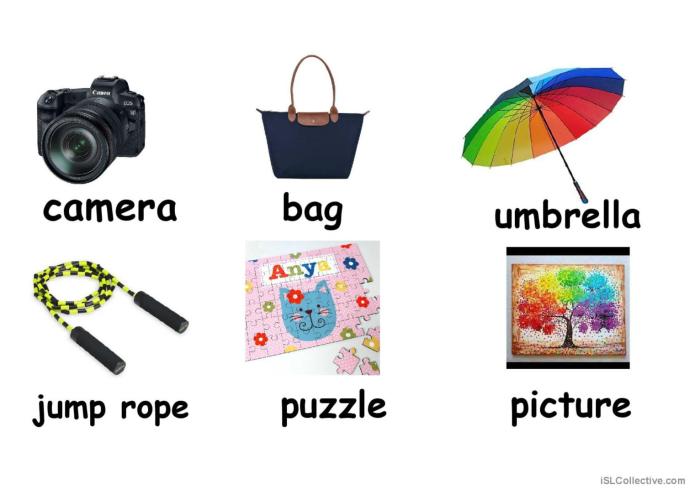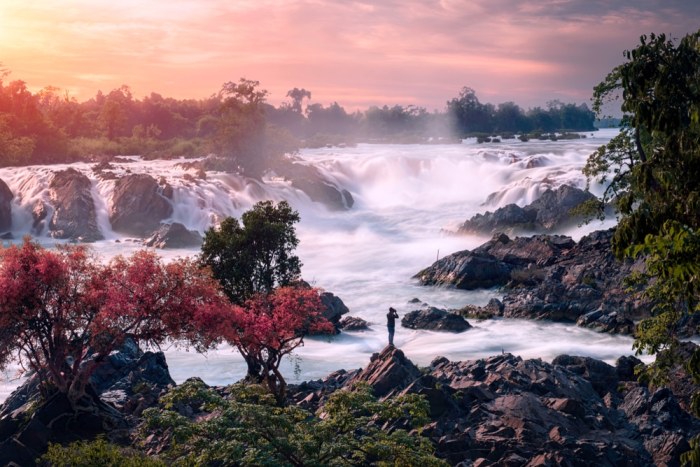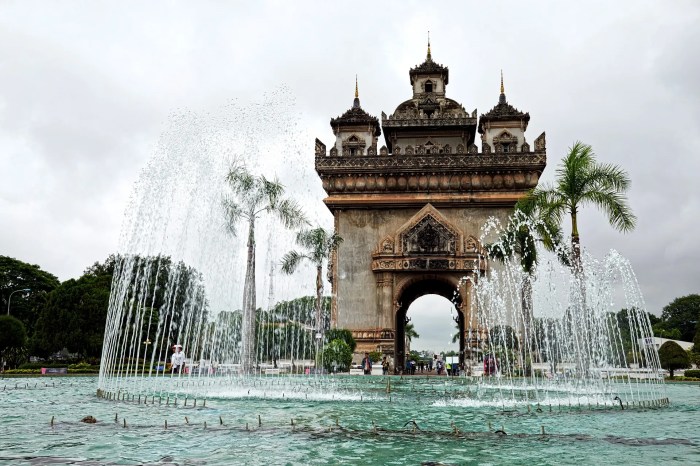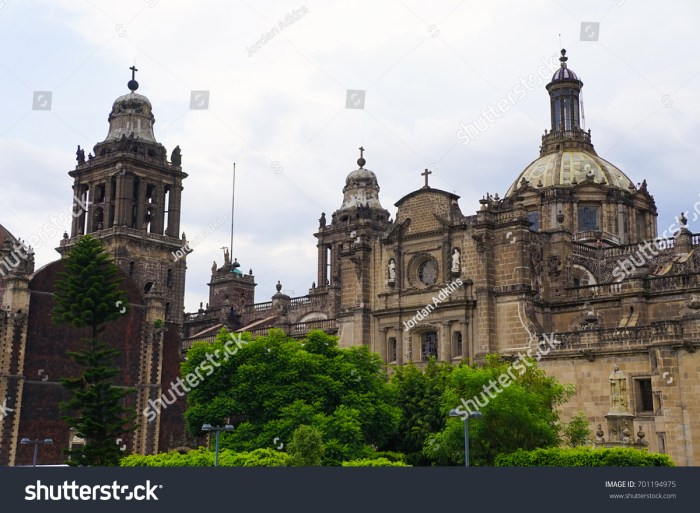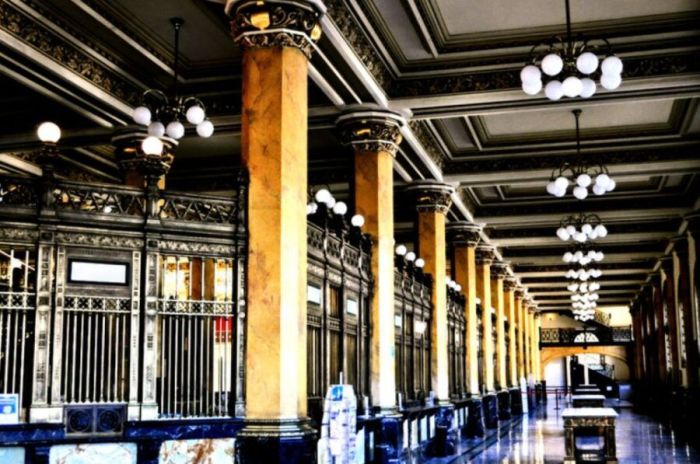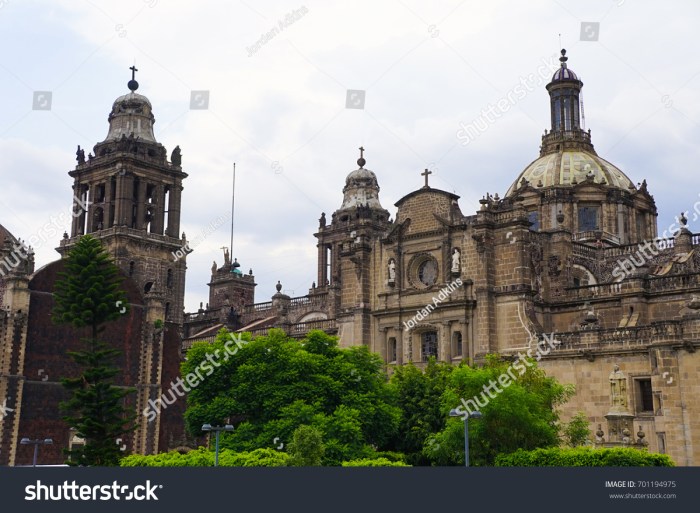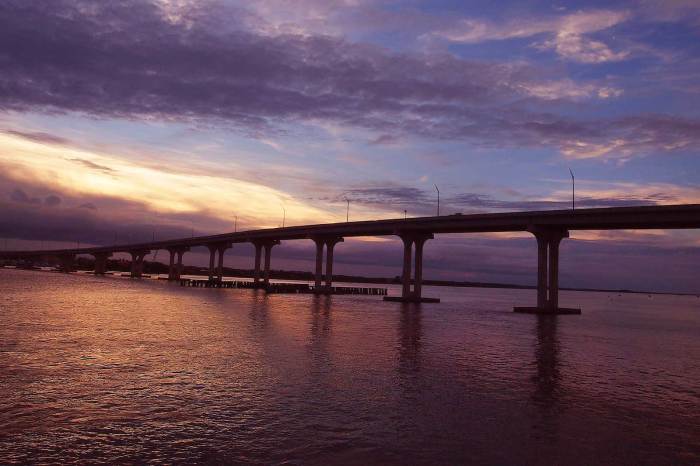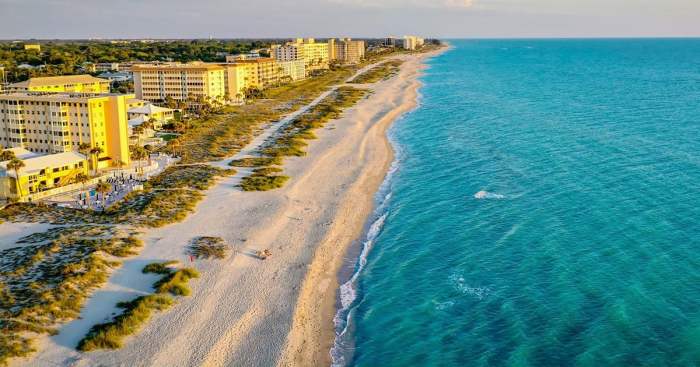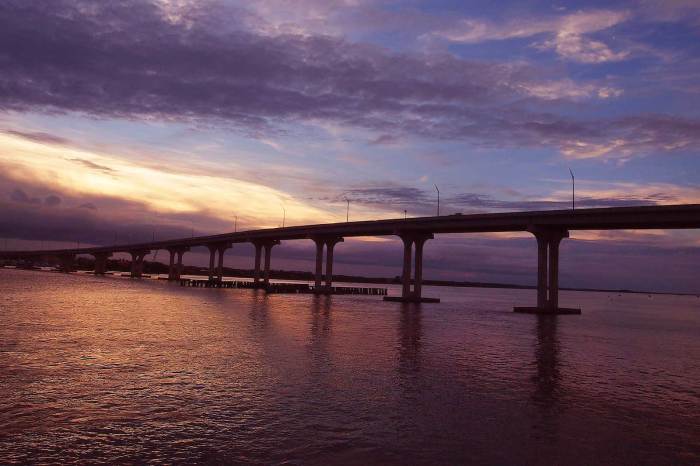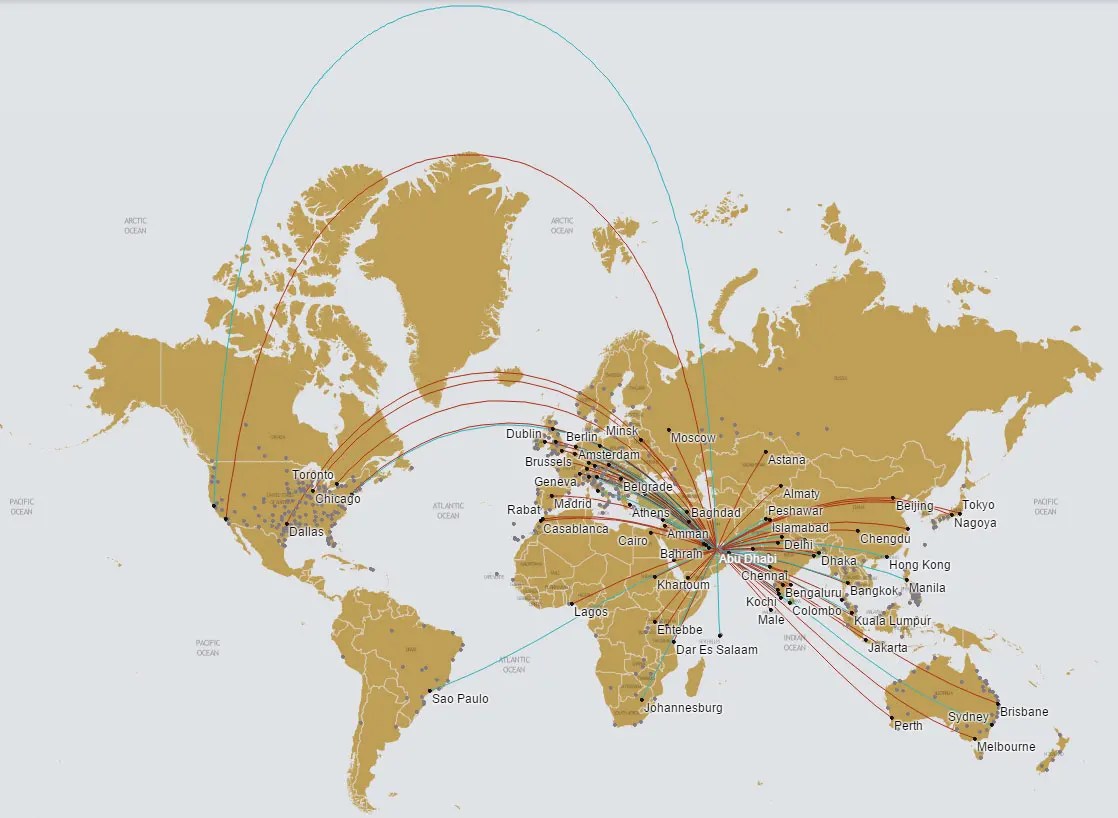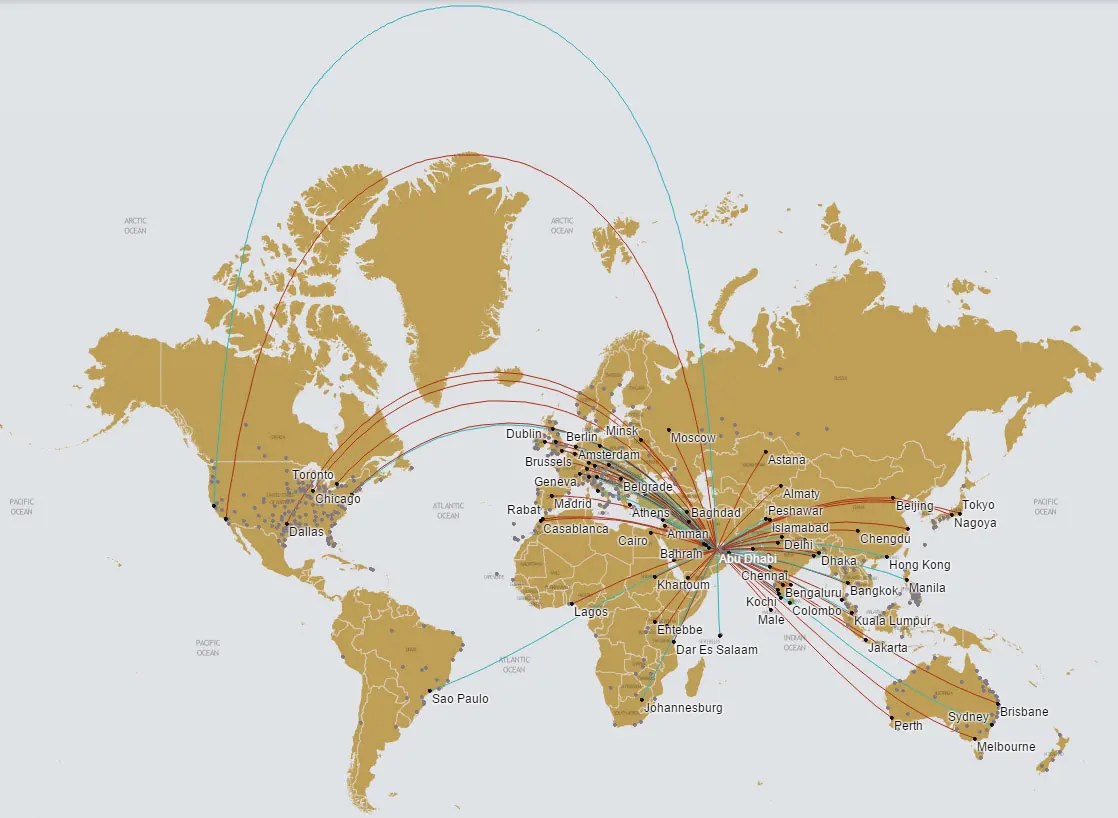Things to know before traveling to Reykjavik! This guide dives deep into the Icelandic capital, offering insights into everything from practicalities like currency and transportation to cultural experiences and local customs. Discover the best time to visit, navigate the city’s unique neighborhoods, and uncover hidden gems for an unforgettable trip.
From bustling city life to breathtaking natural wonders, Reykjavik offers a vibrant tapestry of experiences. This comprehensive guide prepares you for an amazing adventure, ensuring you make the most of your time in this captivating city.
Essential Information
Reykjavik, the capital of Iceland, offers a unique blend of vibrant city life and breathtaking natural beauty. Understanding the city’s specifics, from its location to transportation, is crucial for a smooth and enjoyable trip. This section provides essential information to help you plan your Icelandic adventure.Reykjavik, nestled on the southern coast of Iceland, is a relatively compact city. Its size and population are easily manageable for exploring on foot or by public transport.
This makes it an ideal destination for those who want to experience the city’s charm without extensive travel.
Location, Size, and Population
Reykjavik is situated on the southwestern coast of Iceland, benefiting from a temperate climate compared to other parts of the country. Its relatively compact size and sizable population (around 130,000) make it easily navigable. This allows visitors to experience the city’s attractions without significant travel time.
Best Time to Visit
The best time to visit Reykjavik depends on your interests. Summer (June-August) offers long daylight hours, ideal for outdoor activities, and often features festivals and events. Winter (December-February) presents a unique experience with the Northern Lights, though weather can be unpredictable. Spring (March-May) and Autumn (September-November) offer pleasant temperatures and fewer crowds, but be prepared for occasional rain.
Local Currency and Payment Methods
The Icelandic króna (ISK) is the local currency. Credit cards are widely accepted in shops and restaurants, although cash is also often used. ATMs are readily available throughout the city.
Visa Requirements
Visa requirements vary depending on your nationality. Consult the Icelandic immigration website for the most up-to-date information on visa requirements. This information is crucial for planning your travel arrangements.
Common Transportation Options
Reykjavik offers a variety of transportation options to suit different needs and budgets. Walking is a great way to explore the city center, while public transport provides convenient and affordable options for longer distances. Renting a car offers flexibility, but parking can be challenging in the city center.
Transportation Comparison
| Transportation Method | Pros | Cons | Estimated Cost (approximate) |
|---|---|---|---|
| Walking | Free, good for sightseeing, exercise | Limited range, can be tiring for long distances | 0 ISK |
| Public Transport (buses/trains) | Affordable, efficient, covers most areas | Schedules may not always align with your plans, less flexible | 1000-3000 ISK (one-way trip) |
| Rental Car | Flexibility, exploring beyond the city center | Parking can be challenging and expensive in the city center, fuel costs | 10000-15000 ISK (per day) |
Reykjavik Neighborhoods
Exploring Reykjavik’s neighborhoods provides a glimpse into different aspects of the city. The following table provides a quick overview.
| Neighborhood | Attractions | Estimated Travel Time from City Center |
|---|---|---|
| Downtown Reykjavik | Hallgrímskirkja Church, Harpa Concert Hall | 0 minutes (city center) |
| Laugavegur | Shopping, restaurants, cafes | 5-15 minutes (by foot or public transport) |
| Öskjuhlíð | Quiet residential area, close to nature | 15-30 minutes (by public transport) |
Cultural Experiences

Iceland, a land of fire and ice, boasts a rich tapestry of culture and tradition. From its unique folklore to its modern artistic expressions, Iceland offers visitors a glimpse into a captivating society. Embarking on a journey through its cultural landscape will deepen your understanding and appreciation for this fascinating nation.Icelandic culture is deeply rooted in its history and environment.
Its people have a strong connection to nature, evidenced by their traditions and artistic expressions. The island’s harsh climate and remote location have shaped its culture, fostering resilience, creativity, and a deep respect for the natural world. This strong connection to the land is evident in their language, traditions, and cuisine.
Significance of Icelandic Culture and Traditions
Icelandic culture is deeply intertwined with its history and natural environment. The country’s unique geographical location and harsh climate have fostered a strong sense of community and resilience among its people. Traditional storytelling, music, and dance forms are vital components of Icelandic cultural identity. The sagas, epic tales passed down through generations, provide insight into the island’s history and the lives of its early settlers.
So, you’re planning a trip to Reykjavik? Knowing the best time to visit the Caribbean can help you plan your overall trip. For example, if you’re looking for sunshine and warm weather, consider visiting during the dry season, which is typically from December to April, but the best time to visit the Caribbean depends on what you’re looking for, and if you’re interested in that, check out this resource for the best time to visit the Caribbean best time to visit caribbean.
Ultimately, researching the best time to visit Reykjavik will help you plan your trip better, whether you’re going for the Northern Lights or the bustling city life.
Unique Aspects of Icelandic Cuisine, Things to know before traveling to reykjavik
Icelandic cuisine is a fascinating blend of traditional and modern influences. The country’s limited agricultural resources and reliance on the sea have shaped its culinary traditions. Lamb, seafood, and root vegetables are staples, reflecting the island’s natural bounty. A unique aspect is the emphasis on fresh, local ingredients, often prepared in simple yet flavorful ways.
Recommended Local Restaurants
- Seafood: For a taste of fresh Icelandic seafood, try “Restaurant Dill” or “Salt Restaurant,” known for their innovative takes on traditional dishes.
- Lamb: “Grillmarkaðurinn” and “Icelandic Food Hall” offer excellent lamb dishes, highlighting the country’s agricultural heritage. These restaurants showcase the preparation techniques used in traditional Icelandic cooking.
- Traditional: “Bæjarins Beztu Pylsur” is a must-try for a taste of a classic Icelandic hot dog, offering a taste of the country’s hearty cuisine. It is a popular spot, reflecting the restaurant’s importance in the local culinary scene.
Popular Cultural Attractions
- Museums: The National Museum of Iceland provides a comprehensive overview of the nation’s history and culture, including exhibits on Viking settlements, early Icelandic art, and modern artistic trends.
- Historical Sites: The Þingvellir National Park, a UNESCO World Heritage site, is a significant historical landmark, showcasing the rich cultural and historical significance of Iceland. It’s a powerful reminder of the country’s heritage and its deep connection to the land.
- Art Galleries: The Reykjavik Art Museum Kjarvalsstaðir showcases contemporary and traditional Icelandic art, providing a glimpse into the country’s vibrant artistic scene.
Traditional Icelandic Music and Dance Events
Iceland boasts a rich musical heritage, often blending traditional folk music with contemporary influences. Many local music festivals celebrate traditional Icelandic folk music and dance forms. The Reykjavík Arts Festival often features concerts and performances showcasing Icelandic musical talent. Attend a concert or a dance performance to experience the energy and creativity of Icelandic culture.
Comparison of Museum Types
| Museum Type | Location | Typical Exhibits | Unique Features |
|---|---|---|---|
| National Museum of Iceland | Reykjavik | Icelandic history, art, culture, and natural history | Comprehensive collection spanning centuries, focusing on both cultural and natural aspects |
| Reykjavik Art Museum Kjarvalsstaðir | Reykjavik | Contemporary and traditional Icelandic art | Highlights the evolution of Icelandic art through different eras |
| Saga Museum | Reykjavik | Retells the Icelandic sagas through interactive exhibits | Immersive experience that brings the sagas to life |
| The Settlement Exhibition | Reykjavik | Focuses on the settlement of Iceland | Provides insight into the challenges faced by the early settlers and the cultural impact |
Etiquette for Interacting with Locals
Be respectful of Icelandic customs and traditions. Greetings are generally warm and direct. Dress appropriately for the weather, reflecting the country’s appreciation for practical and functional attire. Engage in respectful conversation and be mindful of personal space. A genuine interest in the country and its people will be appreciated.
Practical Considerations
Navigating a new city, especially one with a unique culture like Reykjavik, requires a bit of preparation. Understanding the local language, customs, safety protocols, and communication infrastructure can significantly enhance your trip. This section delves into the practical aspects you should consider before visiting Reykjavik.Icelandic is the official language of Iceland. While English is widely spoken, particularly in tourist areas, knowing a few basic Icelandic phrases can be incredibly helpful and appreciated by locals.
This section will Artikel some essential phrases and common customs, along with safety concerns and the local healthcare system.
Thinking about Reykjavik? Pack layers, folks! The weather can be unpredictable. Speaking of unique stays, have you considered renting a Frank Lloyd Wright-designed gem like the Seth Peterson Cottage in Wisconsin? It’s a fascinating alternative to the usual tourist traps, and a truly memorable experience. rent frank lloyd wright seth peterson cottage wisconsin Ultimately, though, Reykjavik offers a lot more than just stunning scenery; it’s about embracing the local culture and experiencing the city’s vibrant atmosphere.
Local Language and Phrases
Knowing a few basic Icelandic phrases demonstrates respect for the local culture and can be very helpful in various situations. Here are some common phrases:
- Greetings: “Halló” (Hello), “Góðan daginn” (Good day), “Góða kvöldið” (Good evening).
- Thank you: “Takk” (Thank you), “Þakka þér fyrir” (Thank you very much).
- Excuse me: “Þú afsakið” (Excuse me).
- Please: “Vinsamlegast” (Please).
- Yes: “Já” (Yes).
- No: “Nei” (No).
- I don’t understand: “Ég skil ekki” (I don’t understand).
- Help me: “Hjálpaðu mér” (Help me).
Local Customs and Traditions
Icelandic culture emphasizes respect and politeness. Maintaining a respectful demeanor and being mindful of local customs ensures a positive and enjoyable experience for everyone. Icelanders value directness and efficiency, but maintain politeness.
- Dining Etiquette: In restaurants, removing your hat and placing your napkin on your lap are common courtesies. It is generally considered polite to finish the food on your plate, as this demonstrates appreciation for the meal.
- Dress Code: While dress is generally casual, it is appropriate to dress warmly, particularly during the winter months, when the weather can be unpredictable.
Safety Concerns and Precautions
Reykjavik is a generally safe city, but like any destination, it’s important to be aware of potential safety concerns and take necessary precautions. Common-sense safety measures can prevent many issues.
- Be Aware of Your Surroundings: Keep valuables secure and be aware of your surroundings, especially in crowded areas. Use caution when walking alone at night.
- Avoid Walking Alone in Isolated Areas at Night: Take necessary precautions when walking alone at night in less populated areas, especially during the winter when darkness descends early.
- Driving and Public Transportation: Icelandic roads can be challenging, particularly during winter conditions. Follow traffic rules and be mindful of the weather.
Healthcare System and Emergency Procedures
The Icelandic healthcare system is well-regarded. Emergency services are readily available, but knowing the procedures can help in a crisis. Be prepared for various emergencies.
- Hospitals: Major hospitals are located in Reykjavik, providing comprehensive healthcare services.
- Emergency Services: The emergency number is 112.
| Emergency | Procedure | Further Actions | Notes |
|---|---|---|---|
| Medical Emergency | Call 112 | Provide location details, nature of the emergency, and condition of the affected person. | Stay calm and follow instructions. |
| Accident | Call 112 | Describe the accident, location, and condition of the injured. | Be prepared to answer questions about the incident. |
| Other emergencies | Call 112 | Provide location details, nature of the emergency. | Remain calm and give accurate information. |
Local Communication Infrastructure and Internet Access
Reykjavik boasts excellent communication infrastructure. Reliable internet access is readily available throughout the city.
- Internet Access: High-speed internet access is widely available in Reykjavik, through various providers. Hotels and cafes often offer free Wi-Fi.
- Mobile Data: Mobile data services are generally reliable, although roaming charges may apply. Consider purchasing a local SIM card for better connectivity and cost-effectiveness.
Accommodation and Activities
Reykjavik offers a diverse range of accommodation options, catering to every budget and preference. From cozy guesthouses to luxurious hotels, you’ll find the perfect place to rest and recharge after exploring the city and its surroundings. Beyond accommodation, Reykjavik boasts a vibrant activity scene, with a plethora of tours and experiences designed to immerse you in the island’s unique culture, natural beauty, and culinary delights.Reykjavik’s accommodation scene is well-equipped to handle the needs of tourists, with options that range from budget-friendly to high-end.
The city’s central location makes it convenient to access attractions and activities, and the availability of various transport options further enhances the visitor experience.
Accommodation Options
Reykjavik caters to a wide spectrum of budgets and tastes when it comes to accommodation. Budget-conscious travelers can find comfortable guesthouses, while those seeking a luxurious stay can opt for upscale hotels. Mid-range options provide a balance of comfort and affordability.
- Budget-Friendly: Options include guesthouses like “The Reykjavik Guesthouse” or “Kex Hostel,” offering affordable rooms and often communal spaces.
- Mid-Range: Hotels like “Hotel Borg” or “The North Iceland Hotel” provide a good balance of amenities and value.
- Luxury: For an exceptional experience, consider hotels like “The Reykjavik EDITION” or “Hotel Ranga,” offering exquisite accommodations and exceptional service.
Popular Activities and Tours
Reykjavik and its surrounding areas offer a variety of tours catering to diverse interests. Whether you’re a history buff, nature enthusiast, or foodie, you’ll find a tour that excites you.
- Historical Tours: These tours delve into the rich history of Iceland, exploring historical sites, museums, and landmarks. Expect to learn about the country’s Viking heritage, early settlement, and its journey towards independence. Examples include tours of the National Museum of Iceland or guided walks through the city’s historic center.
- Nature Tours: Iceland’s breathtaking landscapes offer countless opportunities for nature exploration. Tours range from scenic drives through the Golden Circle to glacier hikes and whale watching excursions. You might visit iconic locations like Þingvellir National Park or the Gullfoss waterfall.
- Culinary Tours: Icelandic cuisine is a unique blend of tradition and innovation. Culinary tours provide a chance to sample local delicacies like lamb, seafood, and skyr. Expect to visit local farms, restaurants, and markets.
Tour Cost and Duration
The cost of tours varies depending on the type, duration, and inclusion. Many factors influence pricing, such as transportation, guides, and entry fees to attractions. A brief overview of tour costs is provided below.
| Tour Type | Duration (hours) | Estimated Cost (USD) | Notes |
|---|---|---|---|
| Golden Circle Tour | 4-6 | $60-$120 | Includes sightseeing of Þingvellir, Geysir, and Gullfoss. |
| Whale Watching Tour | 2-4 | $80-$150 | Opportunity to see various whale species. |
| Blue Lagoon Relaxing | 4-6 | $100-$150 | Includes entrance to the Blue Lagoon and time for relaxation. |
Outdoor Activities
Iceland’s outdoor activities are as varied as its landscapes. From hiking and glacier walks to exploring lava fields and Northern Lights viewing, you can find adventures for all interests.
- Hiking: Hiking trails range from easy walks to challenging mountain ascents, offering spectacular views of glaciers, waterfalls, and volcanic landscapes. Costs vary depending on the trail and guided services. Expect to pay between $30 and $100 for guided hikes.
- Glacier Walks: Guided glacier walks provide an up-close experience with Iceland’s icy landscapes. Expect costs between $100 and $200 for a guided glacier walk, including transportation and equipment.
- Northern Lights Hunting: Experiences range from self-guided observation to guided tours, offering the best chances of witnessing this breathtaking natural phenomenon. Costs range from $50 to $150 for guided tours, depending on the tour’s length and inclusions.
Budgeting and Finances
Planning your finances is crucial for a smooth and enjoyable trip to Reykjavik. Understanding the average costs of accommodation, food, and activities will help you create a realistic budget. Knowing potential cost-saving strategies and how to manage expenses during your travels is essential for making the most of your Icelandic adventure.Reykjavik offers a vibrant mix of experiences, from affordable cafes to high-end restaurants and exciting tours.
The cost of everything from your accommodation to your daily meals can vary significantly. This section provides detailed information to help you navigate the financial aspects of your trip and make informed decisions.
Average Costs in Reykjavik
Accommodation costs in Reykjavik range from budget-friendly guesthouses and hostels to luxurious hotels. Expect to pay between 50 EUR to 200 EUR per night for a double room in a mid-range hotel. Hostels typically cost 25 EUR to 50 EUR per night. Food prices in Reykjavik are generally higher than in many other European cities. Expect to spend 20-40 EUR for a casual meal for one person at a restaurant, or 10-20 EUR for a simple lunch.
Food at cafes or supermarkets is more affordable, ranging from 5 EUR to 20 EUR per meal. Activities, such as tours or entry fees to attractions, can cost from 20 EUR to 100 EUR per person.
Sample Budget Plan
A detailed budget plan is vital for controlling your expenses. This allows you to adjust your spending to meet your needs and interests. Below are sample budgets for various trip durations, offering flexibility and guidance:
- 5-Day Trip: Estimate around 500 EUR for accommodation, 300 EUR for food, and 200 EUR for activities. This totals approximately 1000 EUR.
- 7-Day Trip: Anticipate spending 700 EUR for accommodation, 450 EUR for food, and 300 EUR for activities, resulting in an estimated budget of 1450 EUR.
- 10-Day Trip: Expect to spend 1000 EUR for accommodation, 600 EUR for food, and 400 EUR for activities, for a total estimated budget of 2000 EUR.
Exchange Rates and Currency Conversions
Icelandic króna (ISK) is the local currency. Exchange rates fluctuate, so it’s crucial to check the current exchange rate before your trip. Use online converters or apps to get real-time conversions.
Cost-Saving Strategies
Traveling on a budget in Reykjavik is possible. Consider these strategies to save money:
- Accommodation: Opt for hostels or guesthouses instead of luxury hotels. Look for deals and discounts online or through travel agencies.
- Food: Enjoy affordable meals at local cafes or supermarkets, and pack snacks for travel days.
- Activities: Take advantage of free activities like exploring parks or walking tours, and consider purchasing Reykjavik City Cards for discounted access to attractions.
- Transportation: Explore Reykjavik on foot or use public transportation to avoid expensive taxis.
Managing Expenses During the Trip
Keep a detailed record of your expenses. Use a budgeting app or a notebook to track your spending. This allows you to stay within your budget and avoid unexpected overspending. Set daily spending limits and stick to them. Prioritize essential expenses and make informed decisions about your spending.
Food Costs
A table detailing the typical cost of various food options in Reykjavik:
| Food Item | Description | Approximate Cost (EUR) | Notes |
|---|---|---|---|
| Hot Dog | From a street vendor | 5-8 | A quick and affordable option. |
| Sandwich | From a cafe | 10-15 | A more substantial meal. |
| Soup | From a cafe | 8-12 | A hearty and affordable option. |
| Pizza | From a restaurant | 15-25 | A common and popular choice. |
ATMs and Banking Facilities
ATMs are widely available in Reykjavik. Major international banks have branches in the city, offering banking services. Ensure your bank card is compatible with local ATMs and banking facilities. Inform your bank about your travel plans to avoid potential issues.
Getting Around
Reykjavik, a city built on innovation and sustainability, offers a variety of transportation options to suit every traveler’s needs and budget. From efficient public transport to convenient car rentals, exploring the city and its surroundings is made easy. Whether you’re a budget-conscious backpacker or a luxury traveler, understanding the different modes of transport is key to maximizing your trip.
Transportation to and from Reykjavik
Several options exist for reaching Reykjavik, catering to diverse preferences and budgets. International flights arrive at Keflavík International Airport (KEF), conveniently located about 45-50 minutes from the city center. Various transportation methods connect the airport to the city. A direct airport bus is a cost-effective option, offering regular departures and a scenic route. Pre-booked taxis are also readily available, providing door-to-door service with pre-determined pricing.
Car rentals are available at the airport, allowing flexibility for exploring the wider area beyond Reykjavik.
Public Transportation within Reykjavik
Reykjavik boasts a well-developed public transportation system, primarily comprising buses. The network covers most parts of the city, including the city center, surrounding suburbs, and key attractions. Bus routes are clearly marked, with schedules readily available online and at bus stops. This allows for seamless travel within the city.
Car Rental Options and Driving Regulations
Car rentals are a popular choice for exploring Iceland beyond Reykjavik. Rental companies offer a wide range of vehicles, from compact cars to larger SUVs, accommodating different needs and budgets. Driving regulations in Iceland are generally straightforward. However, be aware of road conditions, especially during winter months, as they can vary significantly. Winter driving requires appropriate equipment like snow tires or chains.
Always adhere to speed limits, and prioritize safety on Icelandic roads.
Taxis and Ride-Sharing Services
Taxis are readily available in Reykjavik and offer convenient door-to-door service. Pre-booking is recommended, especially during peak hours. Ride-sharing services are also emerging, offering an alternative to taxis. Prices may vary depending on the distance and time of day. It’s important to compare prices and services before booking.
So, you’re planning a trip to Reykjavik? Great choice! Before you pack your bags, you should definitely check out some fantastic deals on flights to Europe, like the current Norse Atlantic Airways sale. Snag some cheap flights to Reykjavik with norse atlantic airways sale cheap flights to europe. Knowing how to get there for less will make your trip even better.
Remember to research visa requirements and book accommodations in advance, especially during peak season.
Public Transportation Routes and Schedules
Public transport schedules are published regularly and can be easily accessed online through the official Reykjavik public transportation website or app. Knowing the routes and schedules allows you to plan your travel time effectively. Routes are designed to cover major areas, allowing for efficient travel within the city.
Transportation Cost Comparison
| Transportation Option | Estimated Cost (ISK) | Notes | Time (approx.) ||—|—|—|—|| Airport Bus | 1,500 – 2,000 | One-way fare | 45-60 minutes || Taxi (Airport to City Center) | 5,000 – 8,000 | Pre-booking recommended | 45-60 minutes || Car Rental (Economy) | 10,000 – 15,000 (per day) | Includes fuel | Variable, depends on the route || Public Bus (within City) | 500-800 | Single fare | Variable, depends on the route || Ride-sharing (estimated) | 3,000 – 5,000 | May vary depending on route and time | Variable, depends on the route |
Navigating Reykjavik’s Public Transportation System
To navigate Reykjavik’s public transport system efficiently, download the official app or visit the online website. The app provides real-time bus tracking, route information, and schedule updates. Utilizing this technology streamlines the journey and ensures a smooth experience. Knowing the bus stop numbers and routes will help you avoid delays and navigate easily.
Weather and Clothing: Things To Know Before Traveling To Reykjavik
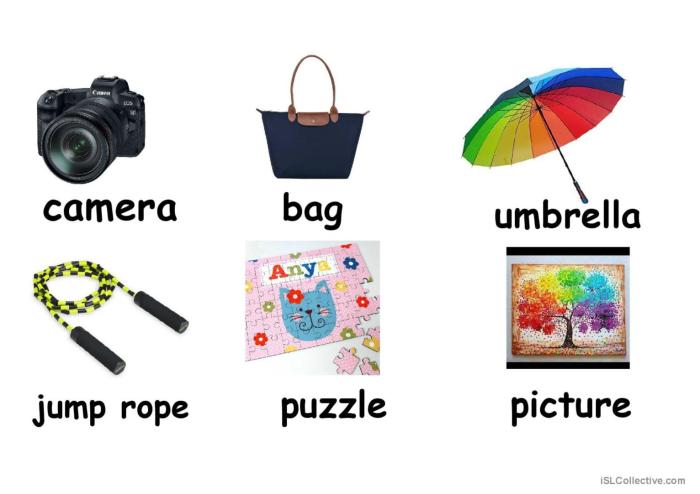
Reykjavik, Iceland, boasts a unique charm, but its unpredictable weather demands careful preparation. Understanding the seasonal variations in temperature and precipitation is crucial for a comfortable and enjoyable trip. Packing appropriately ensures you can fully embrace the Icelandic outdoors, whether you’re hiking, exploring geothermal areas, or simply strolling along the waterfront.Iceland’s weather is famously changeable, influenced by its location in the North Atlantic and proximity to the Arctic Circle.
Expect dramatic shifts in temperature and precipitation throughout the year. From mild summers to bitterly cold winters, Reykjavik’s climate demands adaptability and layers of clothing. Planning your wardrobe around the potential weather conditions will significantly enhance your travel experience.
Typical Weather Conditions
Reykjavik experiences a subarctic oceanic climate. Summers are cool and relatively short, while winters are long and frigid. The city sees significant variations in daylight hours throughout the year, with very short days in winter and extended daylight in summer. This variation impacts activities and planning.
Essential Clothing Items
Proper clothing is essential for navigating the Icelandic climate. Layers are key, as temperatures can change rapidly. Waterproof outerwear, insulated base layers, and warm socks are crucial for staying comfortable.
- Summer (June-August): Expect cool days with occasional rain showers. Pack light, breathable clothing, such as t-shirts, long-sleeved shirts, shorts, and light trousers. A waterproof jacket and pants are highly recommended, even on sunny days, as weather can change quickly. Don’t forget comfortable walking shoes for exploring the city and outdoors.
- Winter (December-February): Prepare for frigid temperatures and heavy snowfall. Insulated outerwear, including a waterproof parka, warm trousers, and thick wool socks, are essential. Waterproof boots with good traction are crucial for navigating icy surfaces. A warm hat, gloves, and scarf are also vital.
Impact on Outdoor Activities
The unpredictable weather can significantly impact outdoor activities. A sudden downpour or a rapid temperature drop can quickly turn a pleasant outing into a challenging one. Always check the weather forecast before heading out and be prepared for potential changes. Be aware that hiking trails might be slippery or closed due to inclement weather.
Average Temperatures and Precipitation
Reykjavik’s average temperatures vary greatly depending on the season. Summer temperatures generally range from 10°C to 15°C (50°F to 59°F), while winter temperatures can drop to -5°C to -10°C (23°F to 14°F). Precipitation can occur throughout the year, with higher likelihood during the fall and winter months. Be prepared for occasional rain, snow, or even sleet.
Clothing Comparison (Summer vs. Winter)
| Item | Summer | Winter | Notes |
|---|---|---|---|
| Outerwear | Waterproof jacket and pants | Waterproof parka, insulated coat | Essential for protection against sudden changes in weather. |
| Base Layers | Moisture-wicking shirts and pants | Thermal underwear, fleece | Essential for regulating body temperature. |
| Footwear | Comfortable walking shoes | Waterproof, insulated boots | Important for comfort and protection from moisture and cold. |
| Accessories | Hat, gloves (optional) | Warm hat, gloves, scarf, and warm socks | Essential for warmth and protection from the elements. |
Layering Clothing
Layering clothing is crucial for managing fluctuating temperatures. Start with a base layer to wick away moisture, add a mid-layer for insulation, and finish with a waterproof and windproof outer layer. This approach ensures you stay warm and dry even in unpredictable conditions.
Weather Forecasts and Information
Reliable weather forecasts are available through various sources, including online weather websites and apps, local news, and travel information centers. Check these resources frequently to stay updated on potential changes in weather conditions. Being aware of the weather patterns and the typical Icelandic climate will enable you to plan your activities accordingly.
Final Wrap-Up
So, pack your bags and get ready for an incredible journey! Reykjavik awaits with its warm hospitality, stunning landscapes, and rich culture. Remember to research visa requirements, plan your budget, and pack for all types of weather. This guide provides a strong foundation for an unforgettable trip to Reykjavik. Embrace the adventure and create memories that will last a lifetime!
